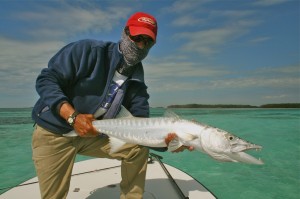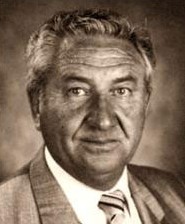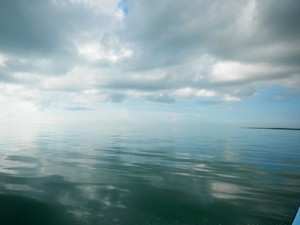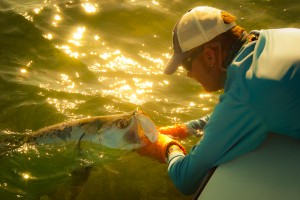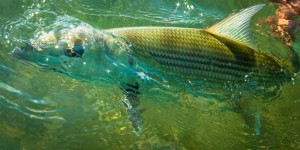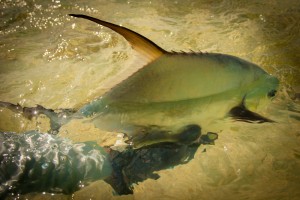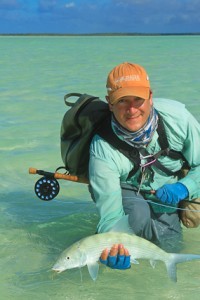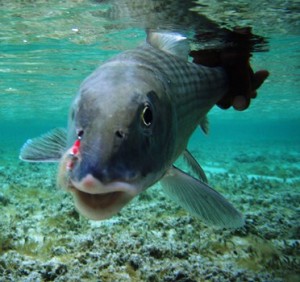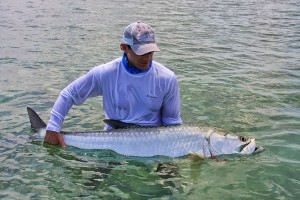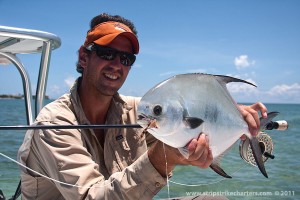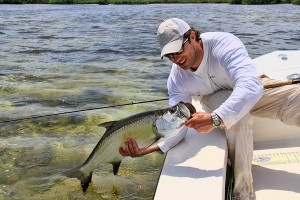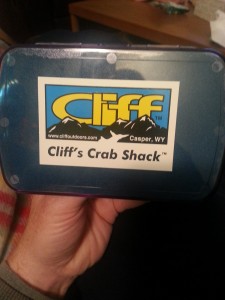John O’Hearn is a Key West Guide. That wild, beautiful little island has a reputation, some earned, some more folklore than fact, but it is an interesting place, for sure. I went there as a kid and remember fondly the Mel Fisher museum and my dad eating conch salad (and me thinking he was crazy). I loved it there, and I haven’t been back since. Reading John’s interview, I want to make it back there and I likely will.
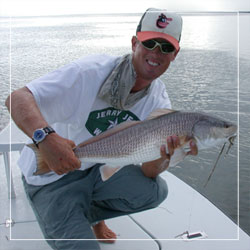
John with a Redfish
Key west reputation as a colorful place is well deserved. It all stems from the undercurrent of the island’s (and the whole lower keys really) attitude. down here no one cares what you do with your life. So long as personal decisions don’t greatly impact the lives of others, you are good to go.This manifests itself in a variety of ways. It might be the 60 year dude who jogs ever morning wearing only shoes tiny bright red shorts and a woman’s red sun hat. Or it might mean that bartenders end up becoming close friends. Or it might mean the city holds a week long party where all forms of debauchery are encouraged (Fantasy Fest). Or might mean you wake up at ludicrously early hours, get in a tiny boat, run for an hour in the dark and try to catch prehistoric fish with a hook in a shrimp costume.
This same “I don’t give a shit what you do with your life” attitude is attractive to the larger world. Many people just come here to have a week of it, before they return to their “reality”. Sadly, this same attitude opened the door for some to “commoditize” this attitude and sell the place out. Essentially, trying to make the place into some sort of Debauched Disney World.
Take for example a recent debate over the widening/dredging of the harbor in key west so that mega cruise ships can fit into port. Despite the fact that the harbor is part of a marine sanctuary that prohibits dredging. Despite the fact that the majority of lower keys residents are against the idea. Despite the fact that dredging would displace or destroy endangered species of coral. There is a very real chance it might get pushed thru. It is the same old political story, that those in power stand to profit from it, so they are trying to make it happen.In Oct. of this year, there will be a referendum held to decide if the first steps (a feasibility study) should be taken in the dredging process. This referendum only includes key west voters, despite the obvious effects it will have on all residents in the lower keys. This feasibility study, of approved would be paid for by the cruise ship industry. And this feasibility study will be done by the army corp of engineers, the masterminds behind the destruction of the Everglades and the Mississippi River gulf outlet (MRGO) that led directly to the flooding of New Orleans in hurricane Katrina. Troubling thoughts all.I guess that is a long way of saying key west is perilously close to selling it soul.
When you are on the water a lot, you see interesting things. What’s something really odd you’ve seen out there on the water?
Weirdest thing on the water: adults dressed in oddly colored shirts swinging expensive sticks, with line and costumed hook attached, at prehistoric fish and accompanied by micro managing masked fascist on elevated platforms holding bigger and even more expensive sticks.(Well played on that answer, by the way)Also weird is that Google Image Search says THIS is John O’Hearn, but I’m thinking maybe not.
My favorite bar in key west would have to the the Conch Republic Seafood Factory. It is on the water and had all the looks of a tourist trap, which it us if you eat there. But slide up to the bar for happy hour, make friends with the bar tender and enjoy the 2 for 1 drinks. Regulars get a lot of comps. My favorite bar in the keys is Coconuts on Big Pine. It is definitely not a tourist trap. Mounted fish on the walls, drunk fishing guides, and pool tables.
I am fascinated by the history of this place, but your average keys guide/fisherman is pretty tight lipped. I love the code names for places; the eccentrics, the snack bar, the monkey box, the animal farm, the bongos, the list goes on. As a tip of my hat to those who laid the foundations of this sport, I am religious about fishing igfa legal ( more a concern with poon leaders than anything else). I licked into an old wood tarpon stretcher box owned by billy pate, that is a prized possession, and used daily.
For everything but the largest of the downtown Islamorada, most any pattern will work, provided it is weighted correctly for the water being fished and it is drab-ish in color. I have caught many bonefish on Gotchas. The only drawback, it is too hard to tie. Lead eyes, a tan ring and a colored head is all you need. Strip them right and most flies work great.
My all time favorite setup is a 4px G Loomis cross-current glx 8wt, a Loop speed runner and a Sharkskin line. Cherry!
My biggest concern is for the future of the fishery. Literately I am concerned that we are running out of bonefish to catch. We had an historically cold winter in 2010, and our fishing has not been the same since. Bonefish are managed well (catch and release only) but I fear habitat loss and water quality issues might prove to be insurmountable obstacles. I hope I am wrong.

